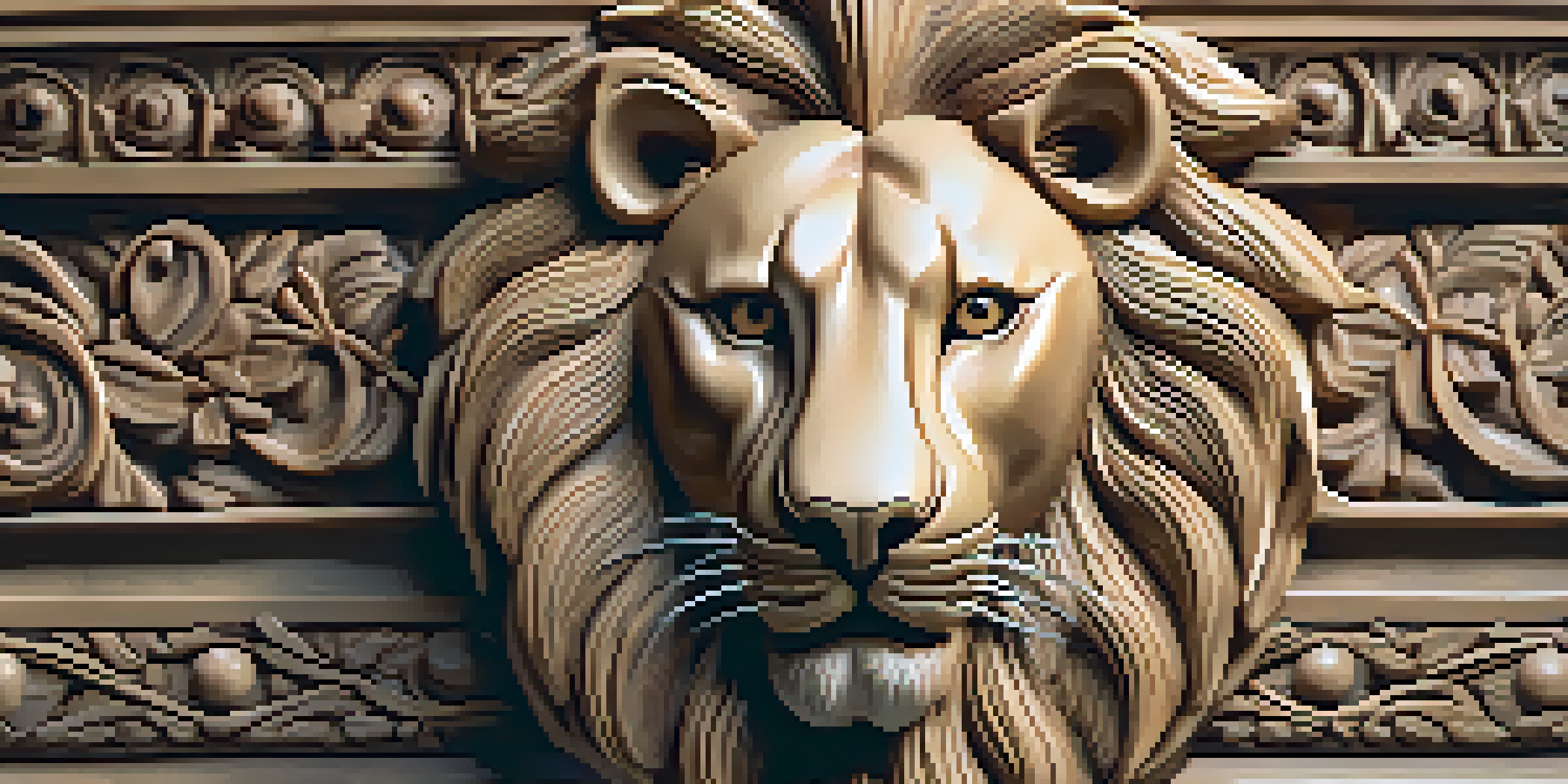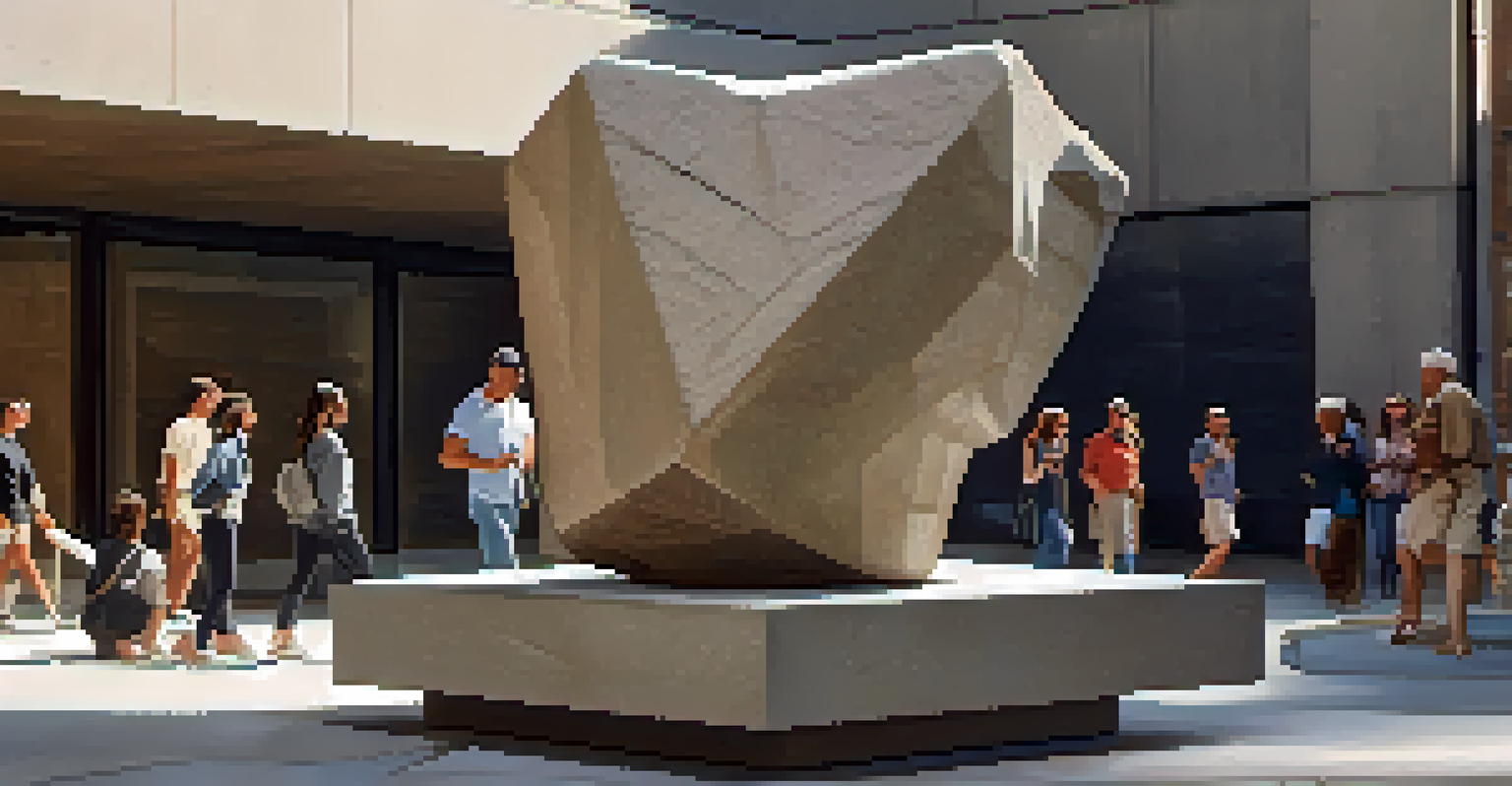Symbolism in Stone Carving: Meaning Behind the Sculptures

Understanding Stone Carving and Its Historical Significance
Stone carving is an ancient art form that dates back thousands of years, often serving practical and decorative purposes. From monumental sculptures to intricate architectural details, these carvings tell stories of cultures and beliefs. Each piece of stone carries not just artistic merit but also historical significance, revealing insights into the societies that created them.
Art is the most beautiful of all lies.
In many civilizations, stone carvings were used to commemorate events, celebrate deities, or represent societal values. For example, the Easter Island moai statues symbolize ancestral worship and the connection to the land. These carvings were not merely decorative; they held deep meanings that influenced the lives of the people who revered them.
As we delve into the symbolism of stone carvings, we uncover layers of meaning that connect us to our past. This exploration helps us appreciate not just the artistry involved but also the cultural narratives that these sculptures embody.
Common Themes and Symbols in Stone Carvings
Stone carvings often reflect universal themes such as life, death, love, and nature. For instance, depictions of animals can symbolize strength, freedom, or even spirituality, depending on the culture. The lion, for example, is a common motif representing courage and nobility in many traditions.

Additionally, human figures in stone carvings can convey various emotions and experiences, from joy to sorrow. These representations are often imbued with symbolic meanings that resonate with the viewer, inviting them to engage with the narrative. A carved figure in a prayerful pose might symbolize humility or a quest for enlightenment.
Historical Significance of Carvings
Stone carvings serve as cultural artifacts that reveal the beliefs and values of ancient societies.
Understanding these themes helps us appreciate the layers of meaning behind the artistry. Each carving serves as a window into the values and beliefs of the culture from which it originates, allowing us to connect with their experiences.
Cultural Variations in Symbolism Across Regions
Different cultures have their unique interpretations of symbols in stone carvings. In ancient Egypt, for example, hieroglyphics and carvings often depicted gods and pharaohs, embodying power and divinity. The sphinx, with its lion's body and human head, symbolizes strength and wisdom, serving as a guardian of sacred sites.
Every piece of stone has a story to tell.
In contrast, Native American stone carvings frequently focus on nature and spirituality, illustrating the deep connection these cultures have with the land. Carvings of animals and natural elements convey respect for the environment and the belief in the interconnectedness of all life.
Exploring these cultural variations enriches our understanding of stone carving as a global art form. By comparing and contrasting different traditions, we gain insight into how symbolism is shaped by cultural context and history.
The Role of Techniques in Conveying Symbolism
The techniques used in stone carving can significantly influence the symbolism of the piece. Different styles, such as relief carving or in-the-round sculpture, can evoke various emotions and interpretations. For instance, a high relief carving may create a sense of drama and movement, enhancing the narrative being told.
Moreover, the choice of stone itself can carry symbolic weight. For example, marble often represents purity and immortality, while granite signifies strength and endurance. Artists carefully select their materials to align with the message they wish to convey through their work.
Symbolism Across Cultures
Different cultures interpret symbols in stone carvings uniquely, reflecting their distinct values and beliefs.
By understanding these techniques and choices, we can appreciate the craftsmanship that goes into stone carving. This knowledge allows us to see beyond the surface and recognize the intentionality behind each detail.
Exploring Mythology Through Stone Carvings
Many stone carvings draw inspiration from mythology, weaving stories of gods, heroes, and legendary creatures into their designs. These mythological figures often embody complex themes such as creation, destruction, and the human experience. For example, the Greek myth of Persephone is sometimes represented in stone carvings that depict her dual existence in the underworld and the realm of the living.
These mythological representations serve as a means to explore cultural values and societal beliefs. They invite viewers to reflect on the lessons and morals embedded in these ancient stories, bridging the gap between past and present. An intricately carved depiction of a phoenix rising from the ashes symbolizes resilience and rebirth.
Understanding the mythology behind these carvings enriches our appreciation of the artwork. It allows us to see how ancient stories continue to resonate with modern audiences, reminding us of our shared humanity.
Modern Interpretations of Symbolism in Stone Carving
In contemporary art, stone carving continues to evolve, reflecting modern themes and issues. Artists often reimagine traditional symbols to address contemporary societal challenges, such as environmentalism or identity. A modern stone sculpture might blend ancient techniques with new ideas, creating a dialogue between the past and the present.
For instance, some contemporary sculptors use stone to highlight the fragility of nature, carving intricate designs that evoke both beauty and vulnerability. This juxtaposition of traditional materials with modern themes invites viewers to reflect on their relationship with the environment and each other.
Modern Themes in Stone Art
Contemporary stone carving blends traditional techniques with modern issues, ensuring the art form remains relevant.
By exploring modern interpretations, we see how the symbolism of stone carving remains relevant. Artists are not only preserving ancient techniques but also breathing new life into them, ensuring that the stories told through stone continue to evolve.
The Impact of Stone Carving on Contemporary Culture
Stone carving's influence on contemporary culture can be seen in public art, architecture, and even digital media. Many cities feature stone sculptures in public spaces, serving as focal points for community engagement and cultural identity. These modern installations often draw inspiration from historical carvings, blending old and new to create a sense of continuity.
Moreover, stone carving is increasingly being incorporated into architectural designs, emphasizing its importance in creating lasting structures. By integrating symbolic elements into buildings, architects can convey messages about the purpose and values of the space, making art an integral part of daily life.

As we recognize the impact of stone carving on contemporary culture, we see its potential to inspire dialogue and reflection. The symbolism embedded in these works continues to shape our understanding of art, history, and community.